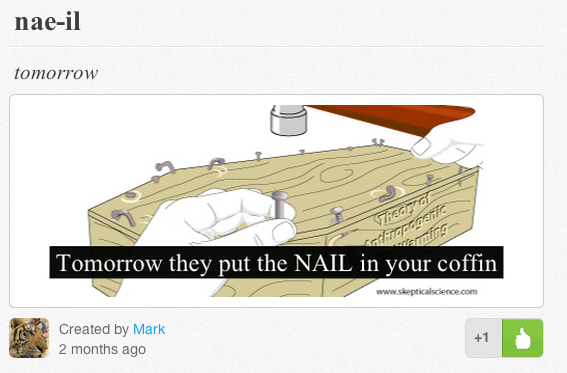#

I’ve been teaching myself Korean for a bit more than a month. Among the other languages I’ve attempted to learn recently, Korean definitely ranks up there in terms of difficulty. It’s not quite as hard as Chinese, but the grammar is more noticeable and its alphabet is special.
While one day I may want to pursue high-level mastery, my initial Korean studies, like Burmese, focused on “hacking” the language, i.e. I wanted to acquire enough vocabulary, pronunciation proficiency and speaking structures to survive the most common speaking situations I’ll encounter. I don’t yet have any travel plans to Korea, but I hope to visit South Korea sometime in the late spring or summer.
Ideally, to learn any foreign language you need to master a number of aspects including speaking, listening, reading, and writing as well as acquiring lots of vocabulary, speaking structures and grammar.
For me, I think vocabulary is key. Learn enough words and phrases and you can get through a lot. This includes vocabulary as comprehensive input (hearing and understanding) and understood expressions (speaking to be understood). Unfortunately Korean’s vocabulary is unrelated to nearly all other languages, so initially there is a lot of “noise” before you get to some guessable meaning.
Adding to the difficulty of a comparatively alien vocabulary (at least in relation to other European languages), Korean also has its own alphabet. It’s confusing for an early learner, and makes it cumbersome to review and type in the mobile, computer age.
Fortunately, in spite of its geographical size (South Korea is the 106th largest country in the world and slightly smaller than Iceland), a lot of people are learning Korean, which means great and free resources for nearly all type of learning whether academic or self-study.
Here are three short reflections on: 1. Finding My Preferred Learning Resource (TTMIK), 2. Using Romanization to overcome challenges with Korean Alphabet (Hangul), and 3. How I Built Stronger Memories using Visual Mems and Puns (Memrise).
Hopefully it can help other learners of Korean and people generally interested in foreign language learning.
Finding My Starting Point: From Textbooks to TalkToMeInKorean
For me, it’s important to find materials and methods you are comfortable with when you start a new language. A lousy, boring textbook will make learning uninspiring. Learning random list of rarely used words won’t help either. A method that’s too slow or too easy for your current level isn’t great either. It’s about being challenged, while staying motivated.
Korean is definitely a language with an overabundance of options for learning rather than a dearth. Largely, it’s a challenge to know where to start with so many options.
While I won’t waste tremendous amount of time searching for the “perfect” learning materials (they don’t exist!), I will spend some time during my meta-research phases finding what I think works best for me and my learning goals.
After trying a few apps, websites, and several textbooks (even initially spending a few days with one in particular), I discovered TalkToMeInKorean.
TTMIK is a fairly recent, free service for learning Korean. They provide short audio lessons along with lesson plans with notes. It is focused in a way to provide you with 10-20 new words in each lesson. Each lesson lasts around 8-15 minutes. The method is progressive, so you’ll build upon previous material. Most importantly the audio quality is great and the Korean speakers are native, which means you’ll be exposed to the right sounds early on. Sometime the commentator dialogue is a bit slow, but mostly it’s fast-paced, focused and colorful.
I think there are likely other great resources for Korean, so I wouldn’t go so far as to claim this one is the “best.” For my learning situation, I found TTMIK thorough enough for my first “hacking” stage of learning. Each learner is different, so you should do your own research and use what fits best for you. The key thing was their focus on essential over extensive vocabulary. You are learning the key words and concepts from the get-go.
In the end, you shouldn’t waste too much time searching for the ideal, perfect course or book, since no book or method is perfect. Ultimately it comes down to you the learner than some magic formula.
The goal is to pick something decent and go forward learning as much vocabulary as you can.
In my case after picking TTMIK, I spent about 5 weeks on Level 1. I progressively went through each lesson and added the vocabulary to my preferred flashcard/learning tool (Memrise. Once it was in my own Korean Memrise course with Audio, I built memories and regularly reviewed my word lists until I mastered the vocabulary and concepts. I’ll discuss this more in a later section.
Korean Alphabet or Romanization: An Early Learner’s Advice
Ask any foreign speaker of Korean, and they’ll all recommend learning the Korean alphabet early in your studies. I agree with this entirely but think romanization does have a place early on.
I’m not so “certain” that you need to avoid Korean Romanization completely, as some strongly argue. In fact, I’d argue that Korean romanization can help speed up early learning and overcome some of the sluggishness of vocabulary acquisition with a foreign script.
To put things in perspective, many Korean sounds don’t closely match English, such that romanization can create pronunciation problems. There really isn’t any standard way to romanize Korean, so various books and situations will differ considerably. Most significantly Korean speakers themselves don’t use Latin Romanization at all so it can be quite confusing to them.
Early in the first few days of my studies, I spent time practicing the alphabet. I used a few different apps and methods, but probably my favorite is “Korean Letters.” It’s not particularly sophisticated, but it’s a simple way to go through the different letter combinations to better understand Korean sounds. For a few bucks, it’s a good investment. You are exposed to the letter, syllable or phrase, then tap it to hear it spoken in native Korean.
Unfortunately knowing the alphabet doesn’t mean you can type it. This creates quite a few problems for using most language learning sites and tools. I made a few attempts to use Korean writing while learning my initial vocabulary from TTMIK and even created my TTMIK Level 1 course in Korean script, but not knowing the word and not knowing how to type it are different problems.
As such, I dropped Korean writing from my first learning stage and used romanized writing. Even in romanized form, my Korean vocabulary list included audio, so I was typing in Latin characters but hearing it in native Korean.
Long-term romanization usage doesn’t make much sense. In a practical sense, Koreans won’t understand Romanized words, so this should be used merely for early acquisition.
More than Memorization: Mems and Memrise help make new words more Memorable

Korean is not part of the Indo-European family of languages. This means learning vocabulary is a bigger challenge since you have “acquire” a list of words and phrases that have essentially no relation to other European languages (though there are a number of loanwords).
There are quite a few Korean words with marked Chinese origins, which helps me since I speak Chinese, but still this makes Korean a bit more challenging than if as an English speaker you study a language like Germany or Spanish.
One of the more important learning lessons I’ve acquired over the last several years studying Chinese and last several months studying various Asian languages is the importance of building power, connective, funny, visual memories.
Many of the metaphors about how memory and learning work are wrong. Our brains are incredibly adept at learning, if we provide it with strong initial connections to the information we want to learn and if properly review and test this newly acquired info over time.
There is a lot of emerging research on the cognitive science of learning but essentially when you learn a foreign word or concept, you need to “bridge” that sound or written character with your existing brain connections. This builds the initial memory. Then you need to review and use that vocabulary to reinforce that memory.
In terms of technology and apps, there have been a lot of tools created for handling the flashcard review nature of learning. One of the most notable is Anki, which allows you to space your learning out to better reinforce memories.
For handling the actual initial memory building, there haven’t been a done of tools or technologies to aim at this problem. This dramatically changed with Memrise, a site/app that aims at helping learners make better memories. To summarize, Memrise is a learning platform for studying lists of vocabulary and concepts and, with a community of learners, building mems or memorable stories or visuals so you retain new words more reliably.
Memrise also makes it possible to create your own courses or vocabulary lists for study. You can add words, definitions and even audio samples. In the case of Korean, like Burmese, I created my own course for my own use and to share with the community of learned. I used the vocabulary from TalkToMeInKorean to create my own course TalkToMeInKorean Level 1.
The magic of Memrise really isn’t in the create of course or vocabulary lists since many other sites allow this. The magic of Memrise happens in creating mems or memorable connections to new words of vocabulary. In adding preexisting words I was able to see other users shared vocabulary learning stories and, if they made sense, use them to remember the words.
In the case of new words, I often created my own memory cues. Some of my own, stupid personal examples are in this post. Here is an example, which shows how to connect a new sounding word with its basic meaning:

By creating and using strong, memoriable initial connections, we improve our ability to remember the new words the first time and, in turn, improve our chances of retaining that new vocabulary long-term.
Conclusion: Progress and Next Steps
For the limited amount of time I’ve put into Korean studies so far, I think I’ve made some good progress. I haven’t been forced into any serious speaking situations, but amongst Korean-Chinese friends I’ve already managed to use Korean some.
While I largely agree with the “Speak From Day 1” approach to language learning, I also find it beneficial to acquire some basic vocabulary, concepts and speaking structures early on. I also think a language like Korean merits some time and thought to ensure you have decent resources and a systematic routine to learn well and quickly.
With TTMIK I found great resources and combining it with Memrise, I have been able to build powerful initial memories and use spaced repetition to retain the new words long term.

